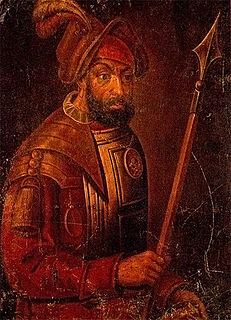
The East Slavic languages constitute one of the three regional subgroups of Slavic languages. These languages are currently spoken natively throughout Eastern Europe and extend eastwards to Siberia and the Russian Far East; while being also spoken as a lingua franca in many regions of Caucasus and Central Asia. Speakers of East Slavic languages far out-number the West Slavic and South Slavic language families.

Siberia is an extensive geographical region, constituting all of North Asia, from the Ural Mountains in the west to the Pacific Ocean in the east. It has been a part of Russia since the latter half of the 16th century, after the Russians conquered lands east of the Ural Mountains. Siberia is vast and sparsely populated, covering an area of over 13.1 million square kilometres (5,100,000 sq mi), but home to merely one-fifth of Russia's population. Novosibirsk and Omsk are the largest cities in the region.

Yakutsk is the capital city of the Sakha Republic, Russia, located about 450 km (280 mi) south of the Arctic Circle.

The Jewish Autonomous Oblast is a federal subject of Russia in the Russian Far East, bordering Khabarovsk Krai and Amur Oblast in Russia and Heilongjiang province in China. Its administrative center is the town of Birobidzhan.

Irkutsk Oblast is a federal subject of Russia, located in southeastern Siberia in the basins of the Angara, Lena, and Nizhnyaya Tunguska Rivers. The administrative center is the city of Irkutsk. It borders the Republic of Buryatia and the Tuva Republic in the south and southwest, which separate it from Khövsgöl Province in Mongolia; Krasnoyarsk Krai in the west; the Sakha Republic in the northeast; and Zabaykalsky Krai in the east. It had a population of 2,428,750 at the 2010 Census.

The Russian Far East is a region in Northeast Asia. It is the easternmost part of Russia and the Asian continent; and is administered as part of the Far Eastern Federal District, which is located between Lake Baikal in eastern Siberia and the Pacific Ocean. The area's largest city is Khabarovsk, followed by Vladivostok. The region shares land borders with the countries of Mongolia, China, and North Korea to its south, as well as maritime boundaries with Japan to its southeast, and with the United States along the Bering Strait to its northeast. Although the Russian Far East is often considered as a part of Siberia abroad, it has been historically categorized separately from Siberia in Russian regional schemes.

Tartary or Tatary was a blanket term used in Western European literature and cartography for a vast part of Asia bounded by the Caspian Sea, the Ural Mountains, the Pacific Ocean, and the northern borders of China, India and Persia, at a time when this region was largely unknown to European geographers. The active use of the toponym can be traced from the 13th to the 19th centuries. In European sources, Tartary became the most common name for Central Asia that had no connection with the real polities or ethnic groups of the region; until the 19th century, European knowledge of the area remained extremely scarce and fragmentary. In modern English-speaking tradition, the region formerly known as Tartary is usually called Inner or Central Eurasia. Much of this area consists of arid plains, the main population of which in the past was engaged in animal husbandry.

The early history of Siberia was greatly influenced by the sophisticated nomadic civilizations of the Scythians (Pazyryk) on the west of the Ural Mountains and Xiongnu (Noin-Ula) on the east of the Urals, both flourishing before the Christian era. The steppes of Siberia were occupied by a succession of nomadic peoples, including the Khitan people, various Turkic peoples, and the Mongol Empire. In the Late Middle Ages, Tibetan Buddhism spread into the areas south of Lake Baikal.

Yermak Timofeyevich was a Cossack ataman and is today a hero in Russian folklore and myths. During the reign of Tsar Ivan the Terrible, Yermak started the Russian conquest of Siberia.
Robert Booker Baer is an American author and a former CIA case officer who was primarily assigned to the Middle East. He is Time's intelligence columnist and has contributed to Vanity Fair, The Wall Street Journal, and The Washington Post. Baer speaks eight languages, won the CIA Career Intelligence Medal and is a frequent commentator and author about issues related to international relations, espionage, and U.S. foreign policy. He hosted the History reality television series Hunting Hitler. He is an Intelligence and Security Analyst for CNN. His book See No Evil was adapted by the director Stephen Gaghan and used as the basis for the film Syriana, with George Clooney playing Baer's character.

The Russian conquest of Siberia took place in the 16th, 17th, and 18th centuries, when the Khanate of Sibir became a loose political structure of vassalages that were being undermined by the activities of Russian explorers. Although outnumbered, the Russians pressured the various family-based tribes into changing their loyalties and establishing distant forts from which they conducted raids. It is traditionally considered that Yermak Timofeyevich's campaign against the Siberian Khanate began in 1581. The annexation of Siberia and the Far East to Russia was resisted by local residents and took place against the backdrop of fierce battles between the indigenous peoples and the Russian Cossacks, who often committed atrocities towards the indigenous peoples.

Siberia, including the Russian Far East, is a vast region spanning the northern part of the Asian continent, and forming the Asiatic portion of Russia. As a result of the Russian conquest of Siberia and of the subsequent population movements during the Soviet era (1917-1991), the modern-day demographics of Siberia is dominated by ethnic Russians (Siberiaks) and other Slavs. However, there remains a slowly increasing number of indigenous groups, between them, accounting for about 10% of the total Siberian population, some of which are closely genetically related to indigenous peoples of the Americas.

Pechora Sea, is a sea at the northwest of Russia, the southeastern part of the Barents Sea. The western border of the sea is off Kolguyev Island, while the eastern border is the western coasts of Vaygach Island and the Yugorsky Peninsula, and the northern border the southern end of Novaya Zemlya.

The Amur Annexation was the annexation of the southeast corner of Siberia by the Russian Empire in 1858–1860 through a series of unequal treaties forced upon the Qing dynasty of China. The two areas involved are Priamurye between the Amur River and the Stanovoy Range to the north, and Primorye which runs down the coast from the Amur mouth to the Korean border, including the island of Sakhalin. The territory now known as Outer Manchuria, part of the wider region called Manchuria, was formerly under the sovereignty of Qing China.
The Lykov family is a Russian family of Old Believers. The family of six spent 42 years in partial isolation from human society in an otherwise uninhabited upland of Abakan Range, in Tashtypsky District of Khakassia. Since 1988, only one daughter, Agafia, survives. In a 2019 interview, Agafia explained how locals were in contact with the family through the years and in the 1950s there was a newspaper article about their family.

Pelym (Пелым) is a former town on the bank of the Tavda River near its confluence with the Pelym River. It is part of Gari District, northeastern Sverdlovsk Oblast, Russia. In 2010, the village had 78 inhabitants.

Baikalia is a vague geographical term referring to the region around Lake Baikal. It is less common than the concept of Transbaikalia, the area to the east of Lake Baikal. The term Baikalia is loosely defined and has no official definition.

Trump: The Kremlin Candidate? is a documentary film first broadcast by the program Panorama on BBC One, and first aired in the United Kingdom on 16 January 2017, four days before the Inauguration of Donald Trump. It examined links between Trump associates and Russian officials and the relationship between Vladimir Putin and Donald Trump. It features investigative journalist John Sweeney, who journeyed to Russia, Ukraine, Lithuania, and the United States during the course of his research. Sweeney had prior experience on the subject matter, having interviewed Trump in 2013, and Putin in 2014. The film was directed by Matthew Hill, Tomiko Newson, and Nick Sturdee.

The Rise and Rise of Bitcoin is a 2014 American documentary film directed by Nicholas Mross. The film interviews multiple companies and people that have played important roles in the history expansion of Bitcoin. It first premiered at the Tribeca Film Festival in New York on April 23, 2014. The film was nominated for the “Best International Documentary Film” at the 2014 Zurich Film Festival. The film has a run time of 96 minutes.














